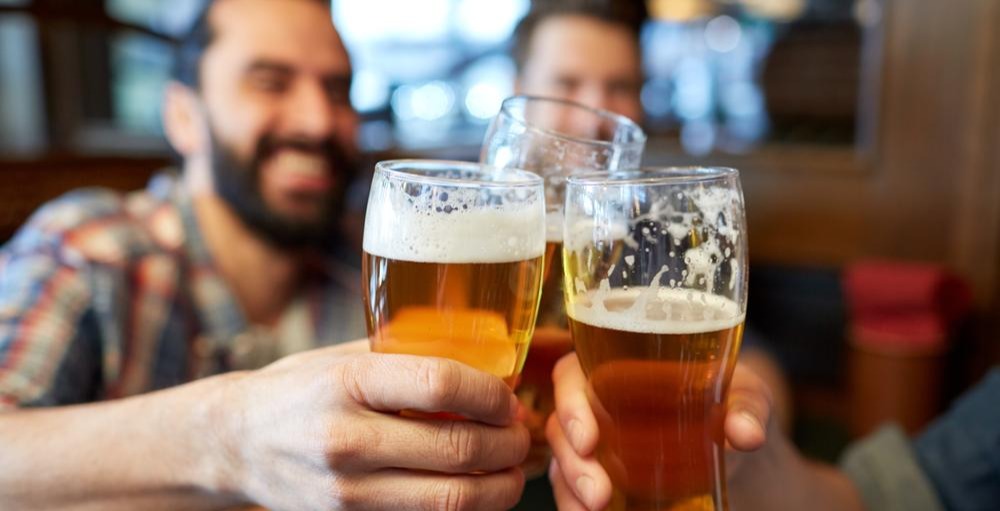Here’s how to measure a person’s intoxication level and understand their limits using BAC.
How can you tell when someone is intoxicated? There are behavioral clues you can watch out for, but every person may react to alcohol differently. Blood Alcohol Concentration (BAC) is a measurement tool used to determine what percentage of your blood is made up of alcohol. BAC is the trusted method of measuring an individual’s intoxication level — and how authorities determine if someone is legally over their alcohol limit.
As an alcohol server or bartender, it’s important that you’re serving drinks safely to your customers and are able to spot the signs that someone may be over their limit.
How is BAC calculated?
BAC is the percentage of blood in your bloodstream that is made up of alcohol. It is measured in milligrams of alcohol per 100 milliliters of blood. For example, a .10% BAC is equal to 1 drop of alcohol per 1,000 drops of blood.
What’s the legal BAC level?
While having drinks with family and friends can be fun, drinking too much can also affect a person’s alertness, slow down their reaction time, reduce their concentration and coordination, decrease their vision and impair their judgement.
According to the Centers for Disease Control and Prevention (CDC), over 95,000 deaths per year are caused by excessive drinking, and over 10,000 people are killed every year because of drunk drivers. Nearly 30 people die in impaired driving accidents every day.
To help limit the number of drunk drivers on the road, it is against the law to drive when you have reached a BAC of .08%.
What is a BAC chart and how do you use it?
As alcohol servers, alcohol sellers and bartenders, you play an integral role in ensuring your customers are enjoying alcohol safely and responsibly. What tactics can you use to ensure that you don’t overserve your customers? One way to do this is to estimate their BAC by counting the drinks you serve them, from their first drink until they leave.
How to estimate BAC:
- count drinks
- estimate your customer’s weight
- use a BAC chart to estimate their BAC level
View the sample BAC chart above. These charts are set up in sections with columns and rows and are meant to be read from left to right. Each section is grouped in 40-minute intervals, with the top column representing the number of drinks consumed within the given time period. The left side of the chart runs from top to bottom and represents a person’s body weight in pounds, going up by 20-pound increments.
To estimate a person’s BAC level:
- Determine whether the person is male or female and use the correct chart based on their sex.
- Find the row with their estimated body weight.
- Find the column with the number of drinks they’ve had within the specific time period.
- Find the value where the row and column intersect – this is their estimated BAC.
The BAC charts are color-coded so that you can easily estimate whether a person is too impaired to drive:
- Green Zone: No drinks have been consumed, or enough time has passed that there is no impairment to their driving ability
- Yellow Zone: Driving skills are impaired, but they are still legally allowed to drive
- Red Zone: The person has reached a BAC of .08% or higher, meaning they are legally intoxicated and not permitted to drive
What factors affect BAC?
The more alcohol you drink, the higher your BAC will be. However, while we can use the BAC chart to estimate a person’s BAC level, it’s important to remember that reaching a BAC of .08% can actually occur in as little as one drink. The BAC chart can be used as a reference point, but there are other factors to keep in mind.
There are 6 other factors that can affect BAC levels:
- size
- weight
- sex
- type of drink
- age
- food consumed while drinking
A combination of these factors can affect a person’s BAC level and could put them at higher risk of becoming intoxicated. That’s why, in addition to counting drinks, it’s also important for alcohol servers and bartenders to know and pick up on behavioral signs of the different stages of intoxication.
What are the 5 Stages of Intoxication?
The 5 Stages of Intoxication are based on the number of standard alcoholic drinks a person has had, their BAC level and the common behavioral signs once someone has reached that level of intoxication. The 5 Stages are:
- Stage 1: Sobriety
- Stage 2: Euphoria
- Stage 3: Intoxication
- Stage 4: Severe Impairment
- Stage 5: Stupor
From the moment a customer enters your business, you should be attentive to their behavior, so that you can spot behavioral changes as they become more intoxicated.
How to responsibly serve alcohol
It’s the responsibility of a licensed business, from owners and managers to employees, to ensure that their customers are enjoying alcohol in a safe manner. As alcohol sellers and servers, the key to avoiding overserving your customers is to count drinks and watch for behavioral signs starting from the moment the customer enters the business. These tools, along with the BAC chart as a reference point, can help you determine a person’s intoxication level.
If, at any point, you are concerned with the amount of drinks a person has had or suspect that they are over the alcohol limit, it’s your responsibility to stop service or discuss with your manager how to approach the situation. Making it a part of your business culture to ensure the responsible service of alcohol will help avoid penalties, potential legal charges and negative publicity for your business — and more importantly, help ensure the safety of your customers, your team and the general public.
There are many factors to keep in mind when making sure you’re serving alcohol safely. Be confident that you have the knowledge, tools and support you need to handle any situation by getting your Alcohol Server Training with Userve.

